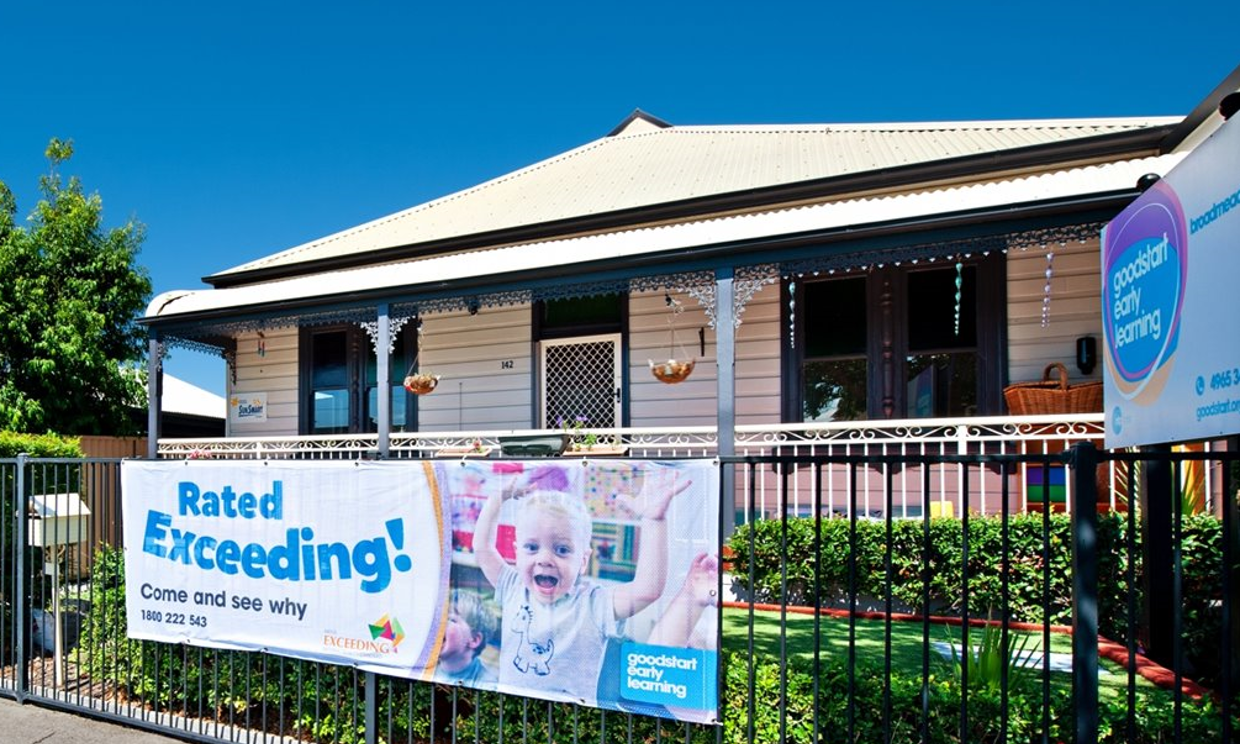Goodstart Broadmeadow in NSW has been on a reconciliation journey, building stronger relationships with children, families, team members, and the community.
From growing knowledge and understanding of Indigenous culture and history, to offering employment opportunities to Indigenous trainees, through to participating in community yarning circles, Goodstart Broadmeadow has shown how to put reconciliation into practice, every day.
Assistant Director and Lead Educator Sandy McNaughton began the process of developing the centre’s first Reconciliation Action Plan (RAP) in 2015, which she said kick-started a big learning curve for herself and the centre team.
“For me, I grew up in an era of teaching in the 1980s with a ‘white Australia’ view of history, and much of what I learned about Indigenous history wasn’t actually factual,” Sandy explained.
“After going to a community yarning circle, I got an urge to learn the truth, and I began to see Aboriginal culture and history as Australian culture and history."
“It was important for me to see some changes in the centre - we had limited knowledge of Aboriginal and Torres Strait Island history and culture, there were fixed mindsets, and tokenistic practices, so there was a lot of room for change.”
Developing a centre RAP
Sandy started the process of developing the centre’s RAP by using the resources available on the Reconciliation Australia Narragunnawali website, and set out to achieve the 14 required actions of a RAP.Sandy participated in training provided by her local community yarning circle, reached out to families online for their feedback and input into the RAP, and sought feedback through the centre’s RAP working group.
When it came time to put the RAP into practice, Sandy said she learned some valuable lessons about how to make it easier for educators to get involved.
“You really need a centre champion who is really committed to the RAP for the long term, and has a passion for learning new knowledge,” Sandy said.
“Also, educators are so busy that it was hard to get the team to log on to the RAP website regularly to share what they were doing in line with the required actions.
“So I created a template in StoryPark - a program we use all day to document children’s learning - and they could link their work through there.
“As a team we made a commitment to what the RAP would look like for us, and there’s an expectation that it is embedded in our programming and in everything we do. It’s added to the program requirements for our centre and updated annually.”
Understanding the gap
As part of their RAP, Goodstart Broadmeadow joined the Goodstart Aboriginal and Torres Strait Islander Community of Practice, and at the first session they discussed the statistics around the number of Aboriginal and Torres Strait Islander teenagers who finish school, and how many go on to complete higher education.According to data from the Australian Government, in 2016 65.3 per cent of Indigenous 20 to 24-year-olds had attained year 12 or equivalent, compared to 89.1 per cent for non-Indigenous Australians (Department of Prime Minister and Cabinet).
And while the number of Aboriginal and Torres Strait Islander higher education students more than doubled in the 10 years to 2016, these students still remain under-represented in universities (only 1.7 per cent of the domestic student population), and continue to have much lower completion rates than their non-Indigenous counterparts.
“That really hit me in the guts,” Sandy said. “As a non-Indigenous person, it made me realise how lucky I have been, and as much as we share the same country, we don’t at the same time. So I really wanted to support employment and learning initiatives.”
Engaging local communities
The centre now has a school-based trainee program for Aboriginal and Torres Strait Islander high school students, and they participate in Goodstart’s Career Tracker program, providing opportunities for First Nations’ men and women to undertake an internship during their University studies before transitioning into employment in early learning.An Aboriginal and Torres Strait Islander vocal and dance group from a local high school visits regularly to perform for the children and get them involved in cultural activities.
Children at the centre participate in yarning circles every day, have learned an Acknowledgement of Country song they sing on special occasions, and Aboriginal and Torres Strait Islander culture and history is embedded into learning programs.
“I’ve seen us increase the authentic knowledge of Aboriginal and Torres Strait Islander history and culture in the children - our play-based program helps the children make those connections in a hands-on way of learning, and the children are really confident in their knowledge.”
Looking ahead
“I hope this learning will continue to be real and important to them throughout their lives; that the inclusion of Aboriginal and Torres Strait Islander people will continue to improve; and that Reconciliation initiatives in the community will continue to be supported by more and more families,” Sandy said.“I want to see the children that we’re bringing up in our centres now become the generation that challenges the school system and how Australian history is taught and portrayed - I think that there still needs to be a lot of change and our children will be the ones saying ‘that’s not right’ because they’re confident in their knowledge they’ve learned here.”


